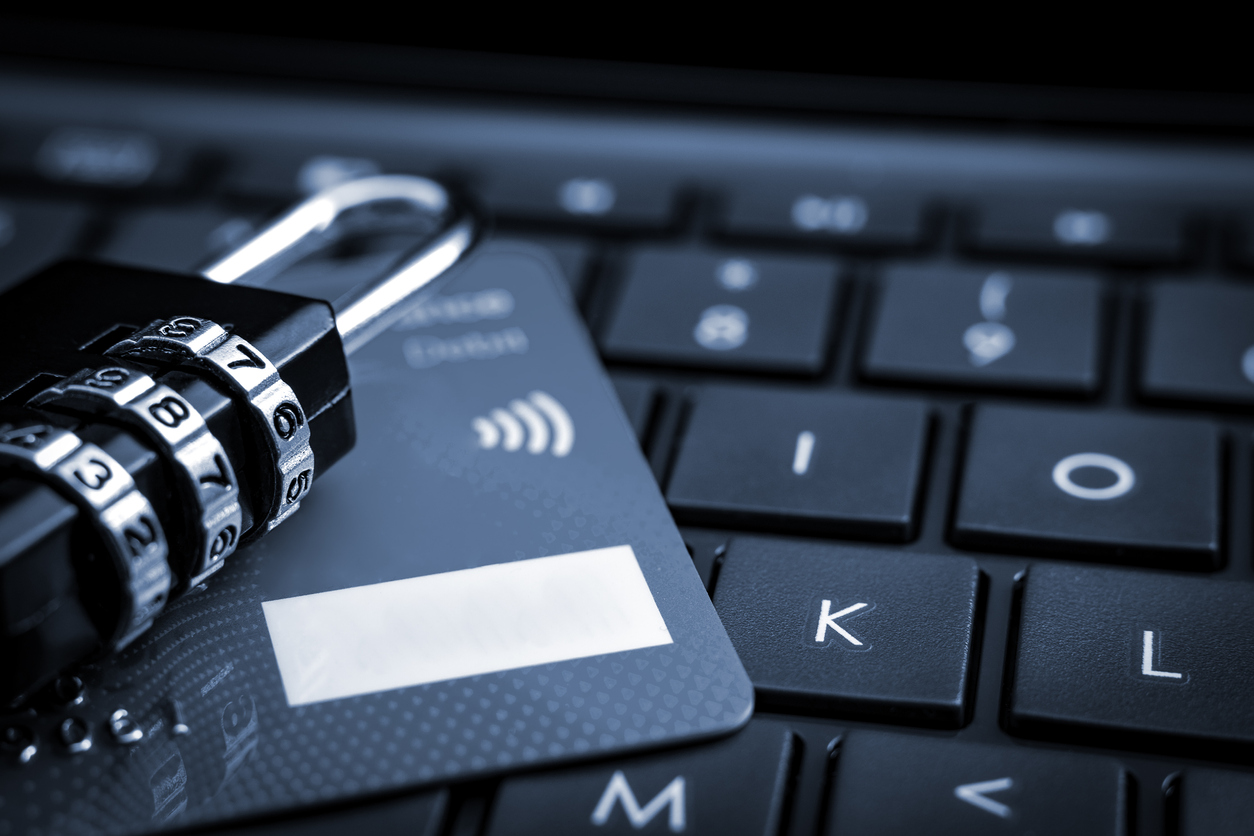August 31, 2023
 by Sharline Shaw / August 31, 2023
by Sharline Shaw / August 31, 2023

Almost a decade ago, theft at brick-and-mortar stores was common.
With the rapid rise of technology, theft has shifted to online stores, too, with digital thieves looking for a chance to breach security.
A prominent example is e-commerce fraud. E-commerce has firmly established itself as the new normal in modern consumer behavior. This article will detail this threat, its types, and how it has spread globally.
E-commerce fraud is a blanket term that encompasses tons of online fraud. It refers to online scams involving the illegal use of customer personal information and transactions conducted in a store. To keep it simple, it is a scam involving e-commerce transactions.
Let's look at how the scams are emerging as a significant threat.
As many as 4.9 billion people use the internet. Most of them make online purchases. This is the driving factor for the sudden emergence of e-commerce fraud. Here are some of the reasons behind online theft.
E-commerce fraud is relatively simple compared to theft at an offline store. Hackers just need a hacking device, hacking skills, and data collection for the attack.
Everyone can access the dark web and get stolen credit card information. Since it takes little to no effort, e-commerce frauds have emerged as potential threats compromising the security of the users.
One of the biggest reasons for rising online fraud is hidden identities. If you browse a website, website owners might get information such as your email address from browser cookies.
Hackers can take on anonymous identities and perpetuate these online scams from anywhere. With this, scammers don't have to worry about cameras or their identifiable factors leaking. Not having a specific identity makes them feel safer.
Think for a moment about a robbery at the local store. There are many risks:
This is not the case with online scams.
Let’s now navigate the spectrum of e-commerce frauds.
E-commerce fraud comes in different forms and shapes and is not restricted to e-commerce transactions alone.
Interested?
Here is the complete list.
Is someone impersonating you? Identity theft is when a hacker uses your name and data to commit cyber crimes and involve you in things you haven't done.
Most users find two-factor authentication a hassle, so they don’t apply it. That makes them an easy target for hackers to penetrate and steal their identity and make purchases.
According to a Javelin Research Study, traditional identity fraud losses amounted to $24 billion in 2021, affecting 15 million U.S. users.
Credit card frauds are a very prevalent form of e-commerce fraud.
According to the Security Organization, there have been 150 million credit card frauds, rising from 127 million in 2021.
Scammers hack and steal credit card information. If hacking does not work, they use the dark web, where millions of credit cards are sold.
First, they make a small purchase to test the credit card. The purpose of testing the card is to ensure it works perfectly. Then they move to expensive orders. Small orders go unnoticed, while users and store owners quickly notice hefty charges.
Account takeover fraud is another prominent e-commerce scam.
In this case, hackers send an email with scam links. Once you log in and click on these links, they gain access to your email and password.
Some hackers use the dark web to purchase passwords and account data. Then they take over your accounts and illegally use them for huge orders in different stores.
Chargeback frauds, also known as friendly frauds, are rising exponentially. According to Expert Market, The cost of chargebacks is said to rise to $117.47 billion by 2023.
Chargeback fraud often involves the transaction company that helps in reversing the payments.
In a chargeback fraud, a buyer purchases an item, makes the shipment, and receives the products. The shopper then asks the payment processors, such as a credit card company, to refund the amount because of invalid transactions.
After the chargeback, the fraudsters gain both the ordered items and the money, costing the store owners substantial amounts of money.
New account frauds were dominant in 2022.
scams related to new accounts were reported in 2022.
Source: Insurance Information Institute
The two modes of new account fraud that were quite common are:
Scammers steal your identity information to make a new bank account or obtain a new credit card, which they then use for illegal purchases.
The dark web is a common medium for this scam, as information is easily sold there.
In this type of e-commerce fraud, the scammer asks you to pay an additional amount for shipping products. Once you decide to pay the extra fee, they will ask you to send the money to a third-party account, which mostly belongs to the hackers.
After you send the funds, they will block you. If you find out about the scam, the next step is the chargeback claim through the credit card company.
Many online platforms follow this business model to build stronger customer relationships.
Scammers take advantage of this trust and break into accounts, purchasing products through the buy now and pay later program. Then, they disappear after receiving their inventory. The scam will be realized only when the store owner contacts their customer for payment.
Push payments allow card owners to make purchases in real time. Scammers try different ways to use push payments, such as social engineering, account takeover, and phishing emails.
They make purchases through users' credit cards, purchasing and receiving products before the card owners.
of online banking payments fraud occurred on a trusted account or device, indicative of push payment fraud.
In interception fraud, the scammer uses stolen credit cards or takes over accounts.
After they make bulk purchases in the store and the order is ready for shipment, the scammer contacts the store owner to change the shipping address.
This way, the transaction occurs from the buyer's account while the fraudster receives the products.
Triangulation fraud involves three prominent people - a shopper, a fraudster, and an e-commerce store owner.
Fraudsters create an account on an e-commerce platform and list the products at a very low price. It attracts buyers due to unbelievable prices. Shoppers trying to bargain at such a price lose their credit card information.
Scammers use their cards to make more purchases from legitimate sellers, add the addresses of these buyers, and ship products to the buyers from legitimate sellers.
Scammers get the money and repeat the cycle multiple times until the store owners deploy effective ways to detect this scam.
Want to detect fraud before it happens? Great! Some red flags that indicate either fraud has happened or is going to happen are:
Usually, the scammer belongs to a different country. The state location varies even if the scammer is from the same country.
In these cases, the IP address doesn't match the billing address, which is a red flag. Sometimes, the shipping country is different from the credit card country.
Monitor all the data inconsistencies for the maximum probability of a scam.
A typical customer purchases one or two products. Most consumers don't buy expensive products and hence look for discounts. It is a good idea to keep an eye out for this.
If the customer is your regular buyer, look at the purchase history. A complete overview of the purchase history will indicate the following:
Sudden multiple large amounts of orders without discounts are often suspicious. You need to check whether it is an account takeover scam.
You can track this fraud type when a buyer purchases from the same store. Suppose the customer is from the U.S. but asks to ship to European countries. Review it to clarify whether it is a genuine order or interception fraud.
Sudden address changes are among the most common signs of scammers trying to ship products to their location.
Unlike certain businesses, few buyers make five or more transactions daily. As a store owner, you should know the history of buyer transactions.
In case of multiple transactions in a few hours, it could be a scammer. Verify the buyer through a different contact and inform them of the same.
A buyer usually has one location for receiving the products, which matches the local IP address. When hackers take over the account, they try to ship the products to their location. They add multiple addresses.
In this case, you can check the buyer account in your store. Ensure they don't have multiple shipping accounts; otherwise, it can be a clear sign of a scam.
Protecting your business and customers is 100% crucial. Some sellers try to get insurance to recoup their lost money. Others might try different safety methods to strengthen the security of websites.
Here are some tips to prevent fraud.
There are e-commerce fraud protection tools that could save you from potential scams.
These tools offer protection from chargeback and account takeover cases and instantly send notifications through the risk management dashboard. They can also detect the leakage of credit card information on the dark web. Some tools authenticate users and decrease friendly scams.
Hackers target websites to crack codes and penetrate accounts. Browser cookies have all the data for accounts. Hence, one of the ways to prevent fraud is to secure websites.
There are a couple of methods to secure your websites. Secure socket layer (SSL) certificates are one of them. They are the security layers when browsing a website. They keep your cookies safe and prevent hacking attempts. You should install it to protect customers' information.
Many hosting servers offer such certificates to protect your data.
Since websites are prone to attack, you need to go through the whole panel of your website security. Notice all the weak points where there is minimal risk of penetration. Remove all the risky points with efficient methods.
You can install different anti-spam plugins to detect fraudulent activities in your accounts. Such things give you optimal security.
Every credit card has effective security in the form of passwords and codes. Adding the credit card at Stripe saves all the information except the CSC or CVV codes.
These codes are unique and don't match any other code. Moreover, they are not saved in the payments. If you have a physical or virtual card, you can access it.
Adding this code as a security layer is a good idea. Hackers can steal all the information except the CVV code, preventing the illegal use of credit cards.
Scammers are very clever. They want to get the maximum out of the stolen credit cards or accounts by making expensive and bulky purchases.
Keep limits on the maximum number of purchases. For example, you can allow one purchase per user. It will take a couple of days for scammers to make enough purchases. Until then, you have plenty of time to check if it is fraud.
Scammers are now trying to intercept the address during the shipping. You should ascertain whether the shipping address is valid. Moreover, you can check the previous shipping addresses and match them to ensure everything is on track.
If data is inconsistent, call the buyers and ask whether they have made the purchase.
The location of the purchase will overlap with the IP address. For example, the scammer is from the UK while the buyer lives in the US. The IP address will be the UK. So you can determine the location difference.
In that case, you should verify the address. Contact the buyer regarding their last purchase. That is how you can filter out the scammers quickly and efficiently.
Most scammers test the card to confirm whether it works. After a successful try, they make a more significant number of purchases.
You should trace all such tests. Check manually and contact the buyers to know the cause of failed transactions. If you find something fishy, block all such buyers trying to scam you.
You can also limit their access to the account and impose purchase limits.
One of the critical mistakes is to acquire sensitive information from the buyer. It helps sometimes but is very susceptible. Why?
Because the hackers can steal it.
The solution?
Avoid obtaining highly sensitive information from customers. Get only the required information that is sufficient for the purchase.
Saving your business from hackers is crucial. A single scam can cost you money, trust of customers, and loss of reputation.
To avoid all the e-commerce fraud cases, you must devise a plan of action.
Get insurance to compensate for the prices. Hire security experts to help you evaluate the weak points of your store security. With the implementation of effective methods to combat security risks, you can make your account more secure.
Discover the pivotal role that brand protection software assumes in safeguarding brand equity within the e-commerce world.
Sharline Shaw is the founder of LeelineSourcing. With 10 years of experience in the field of sourcing in China, her company helps 2000+ clients import from China, Alibaba,1688 to Amazon FBA or Shopify.
Imagine the thrill of buying that designer bag you've been eyeing, knowing you won't pay a...
 by Austin Talley
by Austin Talley
With worldwide retail e-commerce sales projected to increase, the industry is booming without...
 by Bamidele Onibalusi
by Bamidele Onibalusi
Imagine the thrill of buying that designer bag you've been eyeing, knowing you won't pay a...
 by Austin Talley
by Austin Talley



